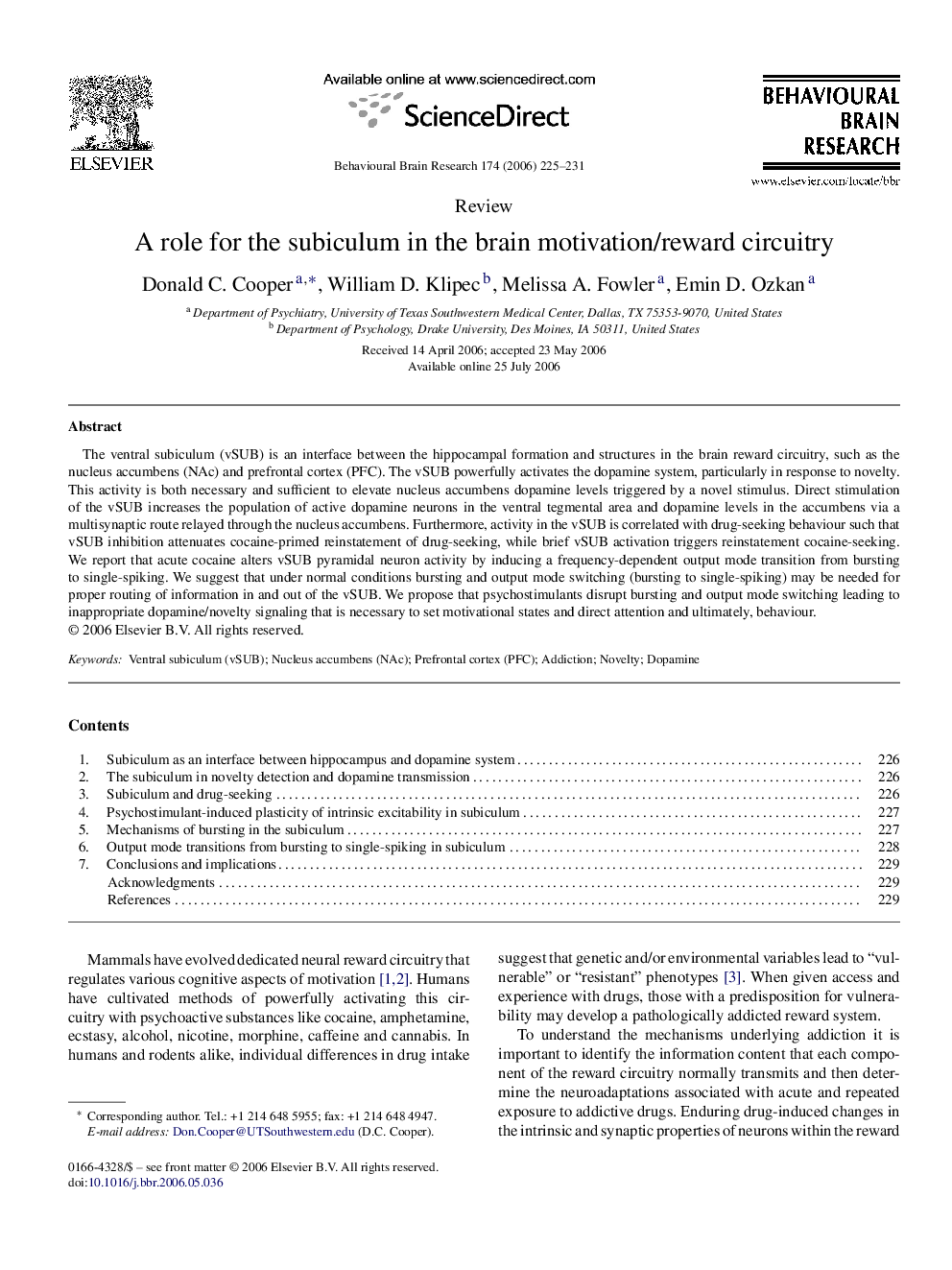| Article ID | Journal | Published Year | Pages | File Type |
|---|---|---|---|---|
| 4316003 | Behavioural Brain Research | 2006 | 7 Pages |
The ventral subiculum (vSUB) is an interface between the hippocampal formation and structures in the brain reward circuitry, such as the nucleus accumbens (NAc) and prefrontal cortex (PFC). The vSUB powerfully activates the dopamine system, particularly in response to novelty. This activity is both necessary and sufficient to elevate nucleus accumbens dopamine levels triggered by a novel stimulus. Direct stimulation of the vSUB increases the population of active dopamine neurons in the ventral tegmental area and dopamine levels in the accumbens via a multisynaptic route relayed through the nucleus accumbens. Furthermore, activity in the vSUB is correlated with drug-seeking behaviour such that vSUB inhibition attenuates cocaine-primed reinstatement of drug-seeking, while brief vSUB activation triggers reinstatement cocaine-seeking. We report that acute cocaine alters vSUB pyramidal neuron activity by inducing a frequency-dependent output mode transition from bursting to single-spiking. We suggest that under normal conditions bursting and output mode switching (bursting to single-spiking) may be needed for proper routing of information in and out of the vSUB. We propose that psychostimulants disrupt bursting and output mode switching leading to inappropriate dopamine/novelty signaling that is necessary to set motivational states and direct attention and ultimately, behaviour.
